When it comes to the health of your lawn, there are a few insects that you need to be aware of in Ohio. Armyworms and chinch bugs alike can cause significant damage to your turf if left untreated. Grubs are another pest that you should keep an eye out for because they feed on the roots of grass, causing them to become unattached to the soil. Keep reading to learn more about these pests so you'll know what signs to look for if you think they have infested your lawn!
Armyworms feed on grass blades and cause a windowpane-like appearance.
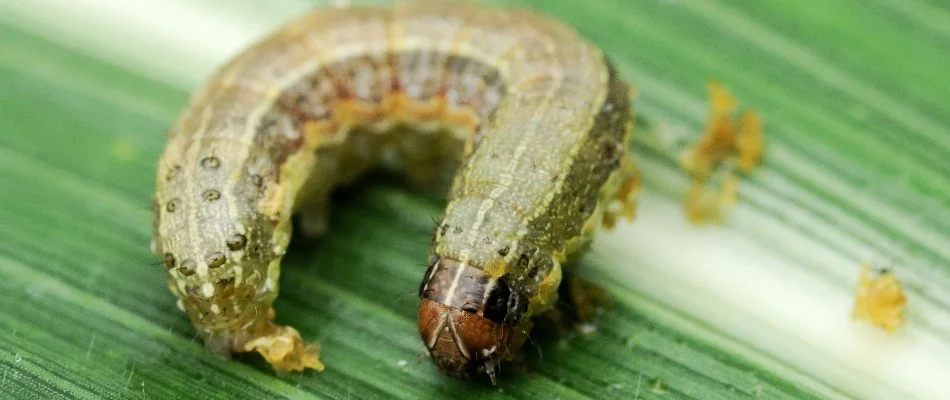
Armyworms are caterpillars that come from certain species of moths. These particular moths lay their eggs during the summer months on grass blades. When the eggs hatch, armyworm larvae start feeding on them. The larvae typically feed together in groups known as an army, which is where they get their name from.
In its early stages, armyworm damage is difficult to detect because the affected areas resemble drought stress or nutrient deficiency. As the infestation worsens, however, entire sections of your lawn may turn brown, and upon closer inspection, the grass blades will have a windowpane-like appearance, as they strip them of their pigment. Severe infestations result in widespread defoliation and weakened lawns that struggle to recover.
Chinch Bugs suck juices out of the grass, causing it to turn brown.
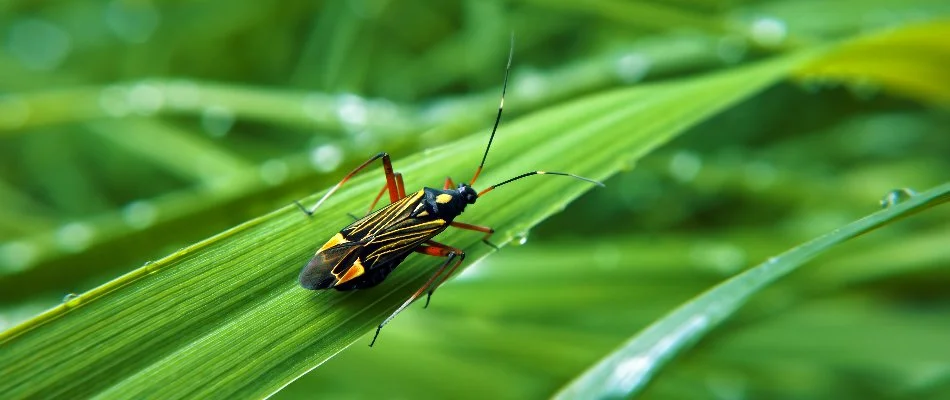
Chinch bugs are another common lawn insect in Ohio that you should be aware of. They are small insects with piercing mouthparts that suck sap from grass blades and inject a toxin that inhibits water flow. They tend to thrive in hot, dry conditions, making them problematic in the summer. Because of this, chinch bug damage often resembles drought stress, characterized by yellowing or browning of the grass and wilting even when water is readily available.
The first indication of chinch bug activity typically appears as irregular patches of dead or dying grass. As the infestation spreads, larger areas of the lawn may turn brown or die off completely. Heavy chinch bug populations can lead to significant loss of turf density, leaving thin, patchy areas susceptible to additional stressors, such as weeds and disease.
Grubs feed on the roots of your grass, destroying its tether to the soil.
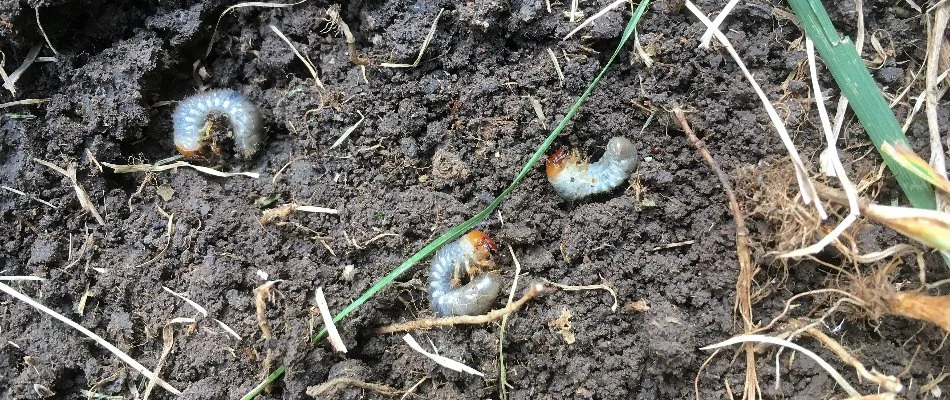
As their name implies, grubs are the larvae of beetles, typically June bugs. During this phase, they live in the soil and feed on the roots of grass, causing them to become unattached to the soil. This results in patches of thinning or dead grass that gradually expand over time if left unchecked.
Early detection is crucial for effective grub control. Signs of grub damage include patches of brown or dead turf that feel spongy when walked on or that lift up like a carpet. As the population continues to grow, more severe symptoms may manifest, including increased animal activity, such as birds, raccoons, and skunks digging up the lawn in search of grubs as a food source, which can cause further damage.
Give us a call today to sign up for our comprehensive lawn insect control services.
If you want to ensure your lawn remains protected from various insects throughout the year, we have just the right solution for you. At Hoffmans Lawn & Fertilization, we offer a complete insect control program, which involves four treatments during the growing season to safeguard your lawn from pests like armyworms, chinch bugs, and more. We also offer preventative grub control treatments with our lawn care program to prevent these harmful insects from infesting in the first place! We proudly serve commercial and residential properties, as well as HOAs, in Delaware, Lewis Center, Powell, OH, and nearby cities. Give us a call today at (740) 318-5296 to enroll in our services!

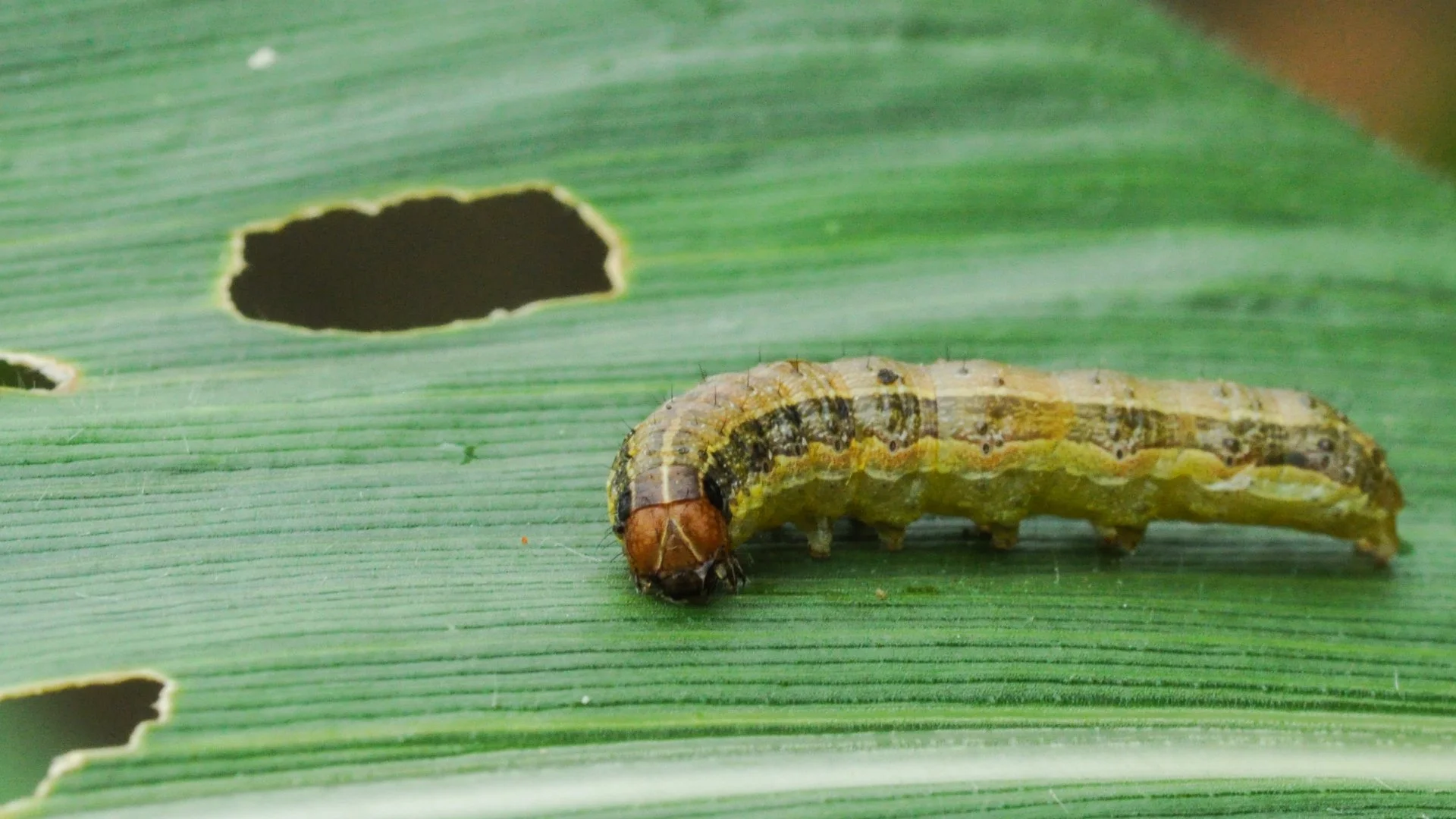
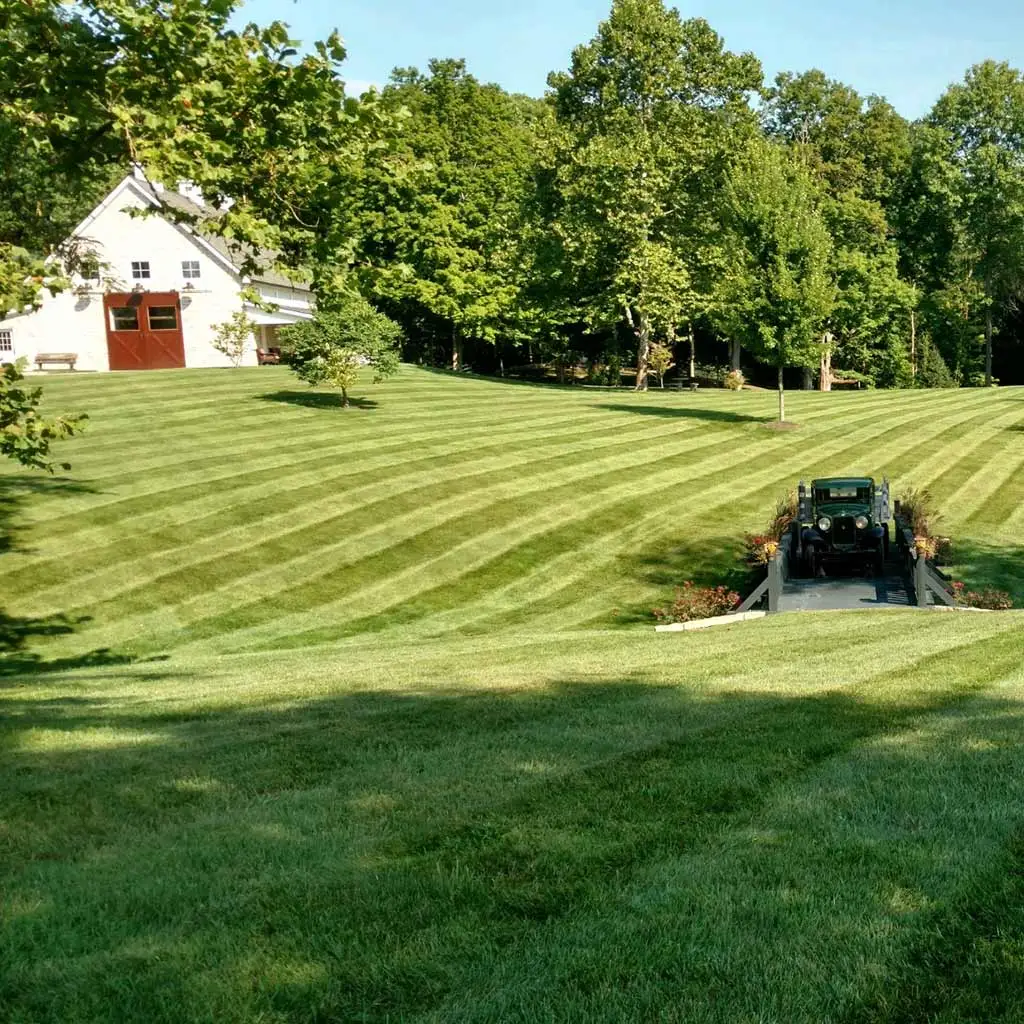

Comments (0)
Thanks for your comment!
Thanks for your feedback! Your comments have been successfully submitted! Please note, all comments require admin approval prior to display.
Error submitting comment!
There is a problem with your comment, please see below and try again.